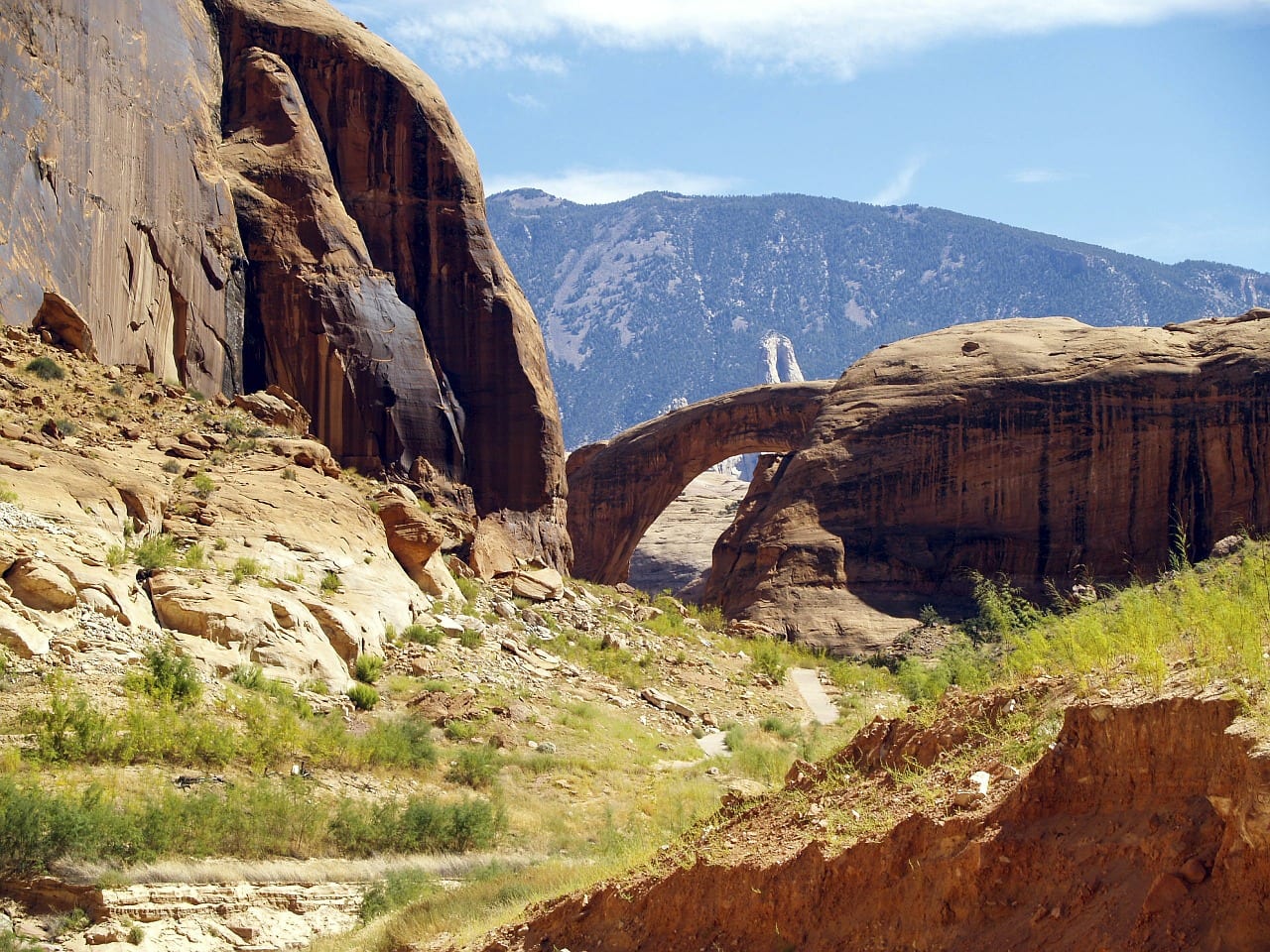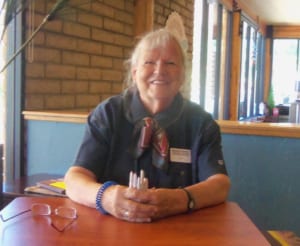If a stop in Page is on your list to do after the Grand Canyon visit there are several interesting stops to make on the way. First you can stop and take a look at the Little Canyon Overlook. A new parking lot an several restrooms have been added to stop. An entrance fee is voluntary, and is operated by Navajo Parks. Several vendors have tables set up and it is always interesting to see what treasures you can find. A short walk to the overlook is rocky and uneven, but the views are great. The overlook is fenced, and with good reason.
Further on at the round-about at RT 89 there is a Navajo Information Center on the right. If you are interested in seeing more Native American lands or other sights and museums this is a good stop to make for current and up to date information. In the spring, they provide information to see Chocolate Falls and directions.
A stop at the Cameron Trading Post is always a great stop. Lots of pawn jewelry and unique gifts, but best of all is the restaurant with Navajo Tacos. Simply the BEST.
Then head to Tuba City. There is a dinosaur tracks park on your left after the turn off to Tuba City. Great fun!! No fee, but Native Americans will ask if you would like them to show you around. Take them up on their offer. First of all, you will never find all the tracks and interesting objects on your own, and it offers you a chance to interact with a Native American. Most were trained by the University of Arizona when the school was studying the tracks, and are very knowledgeable. At the end of your tour it is appropriate to give a monetary gift.
As local cultural advice, never ask a Native Person if they are Navajo/Hopi. Ask what tribe are they from. Hopi are the ancient peoples and the Navajo moved into the area from the north and are related to the Alaskan peoples. Old memories and emotions can run deep, so it is courteous to try to be sensitive to Native people.
In Tuba City there is the Navajo museum (ask at the Information center if it is open) that is a great experience. And next to museum is the Code Talkers exhibit. Code Talkers were Navajo US soldiers who were in charge of radio communications on the front lines in WW11. They spoke code based on the Navajo language, and the Germans never were able to break the code. Sworn to secrecy for many years, the true story of Code Talkers is finally known. An important part of American history and the connections to the war.
About the Author
Joy taught environmental sciences at Southern Vermont College and became active in outdoor land use. Joy now lives ‘off-the-grid’ near the Grand Canyon on an acreage with solar power, and hauls water for her own needs and for her struggling raised-bed desert garden, dogs, cat, chickens, and Garrett-the-goose. Joy has rafted the Colorado River from Moab to Lake Mead, hiked many of the trails, and stayed at Phantom Ranch several times either by hiking or by mule. Learning and reading is her passion, and she is constantly learning more about the Grand Canyon.
Joy is well traveled but never found a place that was more well suited for her than the Grand Canyon. This is her home. Stop in the Grand Canyon Visitor Center IMAX and allow her to share her home with you.





 Shutterstock
Shutterstock